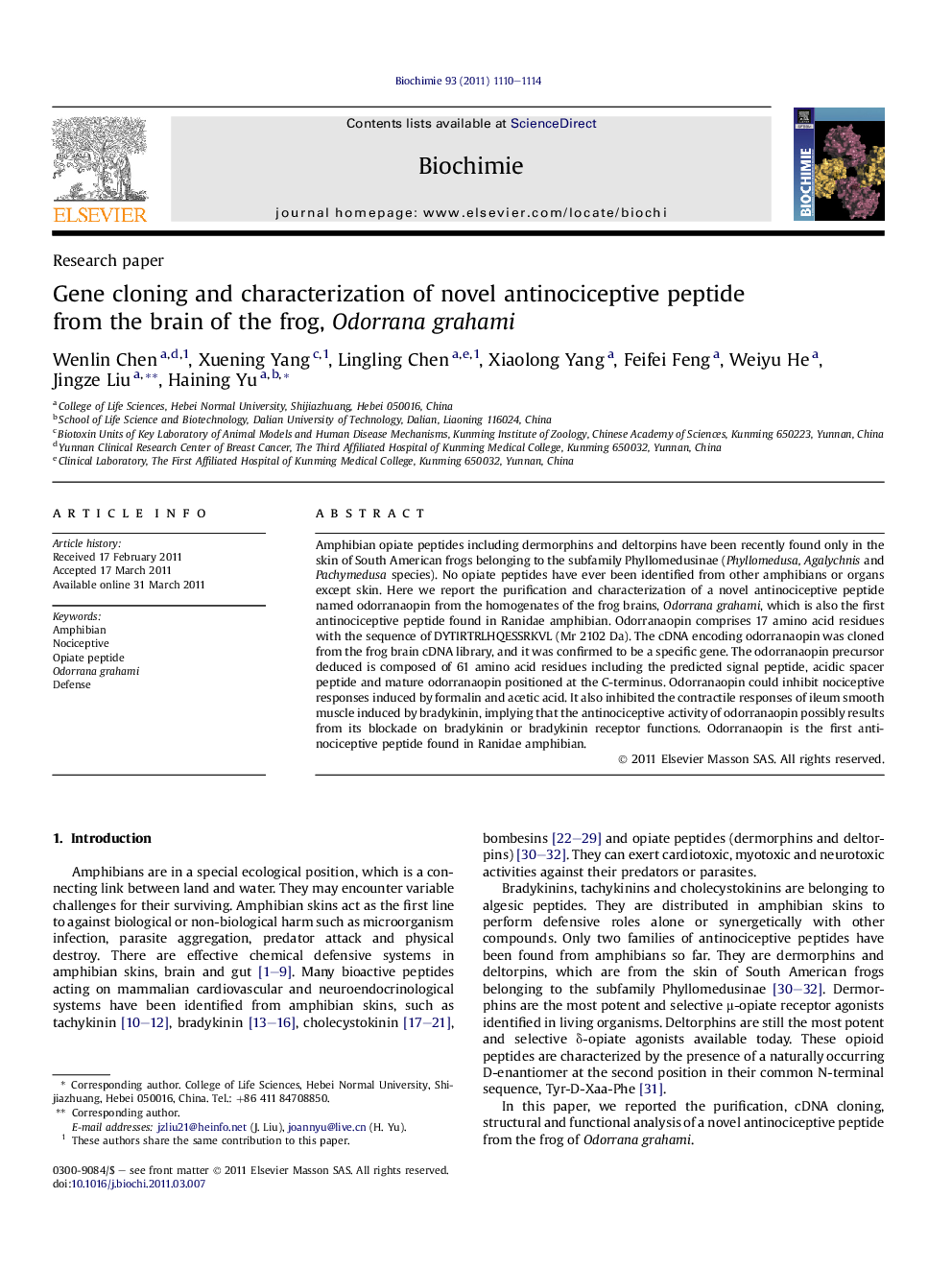| Article ID | Journal | Published Year | Pages | File Type |
|---|---|---|---|---|
| 1952528 | Biochimie | 2011 | 5 Pages |
Amphibian opiate peptides including dermorphins and deltorpins have been recently found only in the skin of South American frogs belonging to the subfamily Phyllomedusinae (Phyllomedusa, Agalychnis and Pachymedusa species). No opiate peptides have ever been identified from other amphibians or organs except skin. Here we report the purification and characterization of a novel antinociceptive peptide named odorranaopin from the homogenates of the frog brains, Odorrana grahami, which is also the first antinociceptive peptide found in Ranidae amphibian. Odorranaopin comprises 17 amino acid residues with the sequence of DYTIRTRLHQESSRKVL (Mr 2102 Da). The cDNA encoding odorranaopin was cloned from the frog brain cDNA library, and it was confirmed to be a specific gene. The odorranaopin precursor deduced is composed of 61 amino acid residues including the predicted signal peptide, acidic spacer peptide and mature odorranaopin positioned at the C-terminus. Odorranaopin could inhibit nociceptive responses induced by formalin and acetic acid. It also inhibited the contractile responses of ileum smooth muscle induced by bradykinin, implying that the antinociceptive activity of odorranaopin possibly results from its blockade on bradykinin or bradykinin receptor functions. Odorranaopin is the first antinociceptive peptide found in Ranidae amphibian.
► Novel AMP (odorranaopin) was identified from frog (Odorrana grahami) brain, other than skin. ► It is the first antinociceptive peptide found in Ranidae amphibian. ► The amino acid sequence of odorranaopin and the cDNA encoding its precursor were characterized. ► Odorranaopin could inhibit nociceptive responses induced by formalin and acetic acid. ► Its antinociceptive activity results from blockade on bradykinin or receptor functions.
